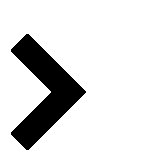REVIEWED P2 OPTIONS
| ||
Reviewed Automotive Services OptionsFollowing are a list of options that have been reviewed by pollution prevention specialists. These options have worked at other facilities and may work at yours. |
||
Know where your wastewater goes | ||
| Know where your wastewater goes - does the drain lead to a sanitary sewer and a treatment facility, or does the water flow directly to a nearby creek or river? In either case, you want to reduce pollutants, but if you are sending wastewater directly to a river, stream, or lake, you will want to take extra precautions. Direct discharge of wastewater without a permit may be illegal. | ||
Keep hazardous waste from sewer | ||
| Keep vehicle fluids and other hazardous wastes out of the sewer system. Store them in well-marked containers for recycling or for disposal at an appropriate facility. Be sure not to include them with your garbage unless your hauler recycles them. | ||
Prevent spills, leaks, and drips | ||
Prevent spills, leaks, and drips. Keep oil, grease, solvents and other chemicals out of storm and sanitary drains.
| ||
Recycle wash water | ||
| Recycle wash water from engine and parts cleaning or exterior washing as much as possible. | ||
Pretreat steam-cleaning wastewater | ||
| Do not allow wastewater from steam-cleaning to flow into storm drains. It must be diverted to the sanitary sewer system with proper pretreatment. | ||
Consider plugging shop floor drains | ||
| Do you need floor drains? If you are not washing parts or vehicles, or have other uses for the drain, consider plugging the shop floor sewer drains, thereby preventing discharges to sewers. | ||
Properly dispose hazardous waste | ||
| Recycle motor oil, batteries, solvents, paints, oil filters, antifreeze, and lubricants. Be aware of any materials you use that are considered hazardous substances, and follow all regulations related to their storage, use or disposal. | ||
Keep dust and Bondo from sewers | ||
Keep dust from sanding and Bondo out of the sewers by:
| ||
Manage amount of paint used | ||
| Use only as much paint and thinner as necessary. Calculate the amount of paint necessary to cover a surface and use the best sized spray cup for the job. | ||
Use an enclosed paint gun washer | ||
| When you clean the paint spray gun, don't release the wastewater to either the sanitary or storm sewer systems. Use an enclosed "gun washer." | ||
Keep batteries off the ground | ||
| Keep batteries and chemical containers dry and off the ground to prevent leaks into storm water. | ||
Drain fluids from stored vehicles | ||
| Drain and collect fluids from stored vehicles that are being dismantled. Reuse or recycle collected fluids. | ||
Maintain pretreatment equipment | ||
| Inspect, maintain, and clean all pretreatment equipment regularly. Separators and grease traps should be cleaned at least every three months. | ||
Dry sweep around fuel-diespensers | ||
| Dry sweep areas around fuel-dispensing islands. | ||
Use a wastewater recycling system | ||
| After pollution prevention techniques, the best way to assure that pollutants stay out of the sewer system is to invest in a self-contained wastewater recycling system. Ultimately, this cuts down water and sewer bills and guarantees that businesses are not contributing water quality problems. | ||
 Find Options for other processes
Find Options for other processes





